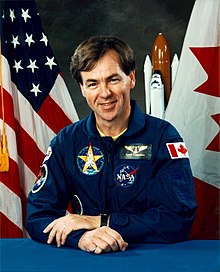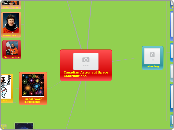
Canadian Astronaut Space Contributions
Planets

Sun
The sun always shows us sunshine to provied us with 12 hours of fun.

Mercury
Mercury is the planet near the sun. It is very hot and dry.

Venus
Venus is the planet with lots of volcanoes and it is extremely hot.

Earth
Earth is the planet we live on. It is nice and warm and a little bit cold. Earth is the only planet with life on it.

Moon
The moon has provided light for animals who cannot see in the dark.

Mars
Mars is the planet that is very warm but a little bit dry.

Jupitar
Jupitar is the only planet with a red spot in the middle

Saturn
Saturn is the planet with rings around it on tillted angle.

Uranus
Uranus is the planet with rings around it and it is the only planet that is side ways.

Neptune
Neptune is the blue planet named after the greek god Neptune. That is why Neptune is blue because it's the colour of the water.

Pluto
Pluto is a planet but it is now known as a dwarf planet and it is extremly cold.

Technology

Space Suit
A space suit is a garment worn to keep an astronaut alive in the harsh environment (vacuum and temperature extremes) of outer space. Space suits are often worn inside space ships as a safety precaution in case of loss of cabin pressure.

Space Station
A space station is where a group of people all come together and make stuff like a space ship to get into space faster and a space suit so your protected in space etc. Just so they can get information what is there.

Space Ship
A Space ship is a type of vehicle, vessel or machine designed for spaceflight. Space ship are used for a variety of purposes that include communications, earth observation, meteorology, navigation, planetary exploration and transportation of humans and cargo.

Satellite
A satellite is an object which has been placed into orbit by human endeavours.The satellite is used for taking pictures up in space. Sometimes to see what is going on around us in space.

Rovers
A rover is a space exploration vehicle designed to move across the surface of a planet or other astronomical body. Some rovers can take pictures or indicate the temperature of a planet and then send it back to earth.

Telescope
A telescope is used for observation of distant planets, galaxies, and other outer space objects. It is also used for location to see what is up in space if you are not old enough to go up in space.
Agency

NASA
The National Aeronautics and Space Administration (NASA) is the agency of the United States government that is responsible for the nation's civilian space program and for aeronautics and aerospace research. NASA is the most popular space agency in the world.
Astronauts

Bjami Tryggvason
On August 7, 1997, Bjami Tryggvason flew as a payload specialist aboard Space Shuttle Discovery on Mission STS-85. His primary role was to test MIM-2 and perform fluid science experiments designed to examine sensitivity to spacecraft vibrations, in order to develop a better understanding of the need for systems such as the MIM on the International Space Station (ISS).

Chris Hadfield
In November 1995 Hadfield served as Mission Specialist 1 on STS-74, NASA's second space shuttle mission to rendezvous and dock with the Russian Space Station. In April 2001 Hadfield served as Mission Specialist 1 on STS-100 International Space Station (ISS) assembly Flight 6A. The crew of Space Shuttle Endeavour delivered and installed Canadarm2, the new Canadian-built robotic arm.

Dave Williams
Dave Williams was a mission specialist on STS-118 (August 8 to 21, 2007), the 119th Space Shuttle flight, the 22nd flight to the International Space Station, and the 20th flight for Endeavour. During the mission, the crew successfully added a truss segment, a new gyroscope and an external stowage platform to the Station.

Julie Payette
Julie Payette flew on Space Shuttle Discovery from May 27 to June 6, 1999 as a crewmember of STS-96. During the mission, the crew performed the first manual docking of the Shuttle to the International Space Station, and delivered four tons of supplies to the Station. Julie Payette served as a mission specialist, was responsible for the Station systems, supervised the space walk and operated the spaceship.

Ken Money
Ken Money first worked with the NASA space program in 1962 and consulted as a scientific advisor to the U.S. agency. He acted as a co-investigator on a range of experiments on six Space Shuttle missions. Ken Money is a member of Canada’s original astronauts from NASA.

Marc Gameau
Marc Gameau is one of six Canadian astronauts selected in December 1983. He was seconded to the Canadian Astronaut Program from the Department of National Defence in February 1984 to begin astronaut training. He became the first Canadian astronaut to fly in space.

Robert Thirsk
In June and July 1996, Robert Thirsk flew as a payload specialist aboard Space Shuttle mission STS-78, the Life and Microgravity Spacelab (LMS) mission. During this 17-day flight aboard Columbia, he and his six crewmates performed 43 international experiments devoted to the study of life and materials sciences. The life science experiments investigated changes in plants, animals, and humans under space flight conditions.

Roberta Bondar
Roberta Bondar was the first female canadian astronaut to go up in space. She is one of the six Canadian astronauts selected in December, 1983 and began astronaut training in February, 1984. Roberta Bondar flew on Discovery during Mission STS-42, January 22-30, 1992 where she performed experiments in the Spacelab and on the middeck.

Steve Maclean
Steve Maclean went to space for the second time on Mission STS-115, and served as mission specialist on Space Shuttle Atlantis acting as flight engineer and robotics lead for the first assembly flight of ISS after the Columbia accident. He became the first Canadian to operate Canadarm2 in space when the crew installed trusses and deployed solar array panels on the International Space Station.

Special Power (Equipment)

Space Tools
Space

Stars
A star is a massive, luminous sphere of plasma held together by gravity. At the end of its lifetime, a star can also contain a proportion of degenerate matter. The nearest star to Earth is the Sun, which is the source of most of the energy on Earth. Other stars are visible from Earth during the night, when the bright moon appears the stars will be shown.

Galaxy
A galaxy is a massive, gravitationally bound system that consists of stars, gas, and dust, and an important but poorly understood component tentatively dubbed dark matter and living things and non-living things.

Life Forms
Life forms are living creatures that live in space like for example aliens on mars are called marshins. People don't know for sure if these aliens exist, like we do but it is still a mystery.
